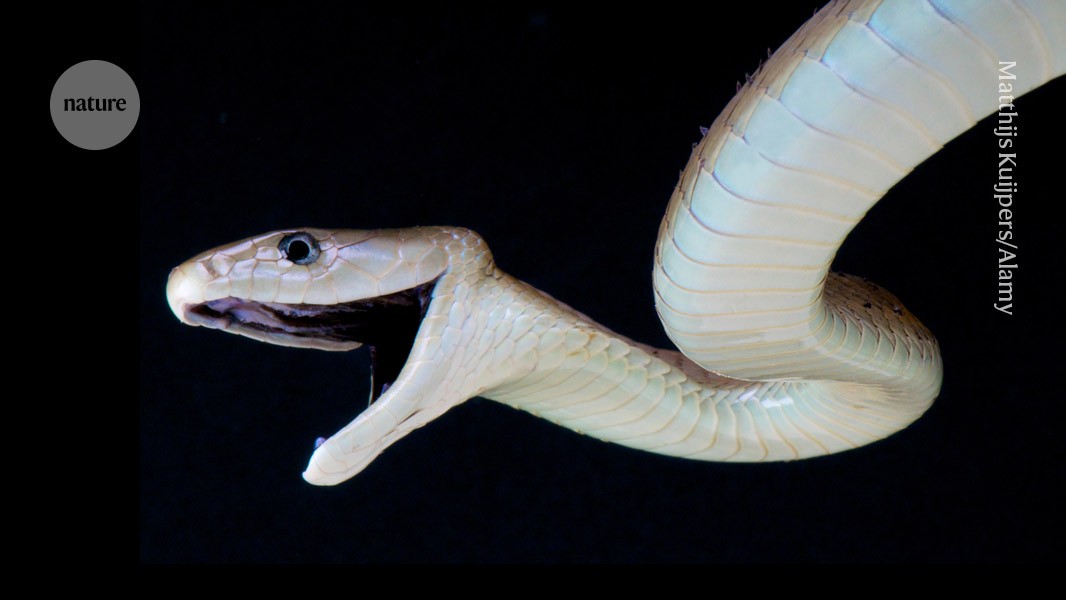The black mamba is one Africa’s most deadly venomous snakes.Credit: Matthijs Kuijpers/Alamy
An antivenom using antibodies from a llama and an alpaca can neutralize venom from some of the world’s most venomous snakes, according to a study published today in Nature1. When administered to mice, the treatment conferred protection against toxins from 17 African snake species and reduced skin damage caused by venoms.
Snakebites are a neglected public-health issue that is estimated to kill roughly 20,000 people in sub-Saharan Africa every year. Around 300,000 snakebites occur annually in this region, and tissue death from venom leads to approximately 10,000 amputations.
Current antivenom treatments are made by injecting large animals, such as horses, with small doses of snake venom. The horses produce antibodies against the venom, and the horse plasma is extracted and used to treat bites in people. But these antivenoms are mostly specific to a single snake species.
It can be difficult to identify the snake behind the bite, and that makes providing timely treatment difficult, says study co-author Anne Ljungars, a bioengineer at the Technical University of Denmark in Kongens Lyngby.
Horse plasma contains a variety of antibodies and other proteins that are recognized as foreign by the human immune system and can thus trigger an adverse immune response in people. Moreover, conventional antivenoms are unable to prevent the local tissue death that snakebites can cause.
Camelid-derived antibodies
To develop the broad-spectrum antivenom, researchers exposed an alpaca and a llama to venoms from 18 of the most dangerous elapid snake species in sub-Saharan Africa. Elapids are venomous snakes characterized by erect fangs at the front of their mouths, and include cobras, mambas and rinkhals. The team isolated nanobodies — small versions of antibodies that can penetrate tissues and bind to tissue-destroying toxins — from the camelids. Eight of these nanobodies were combined into a single cocktail.
When administered to mice that had been injected with snake venom, the recombinant antivenom successfully neutralized venoms from 17 of the 18 target snake species. It also significantly reduced the skin damage caused by venoms, outperforming the widely used Inoserp PAN-AFRICA antivenom.
It was previously thought that developing a broad-spectrum antivenom would require “an impractically large number of antibodies”, the authors wrote, because the venom of some snake species can contain up to 100 toxins from several protein families.
First Appeared on
Source link












